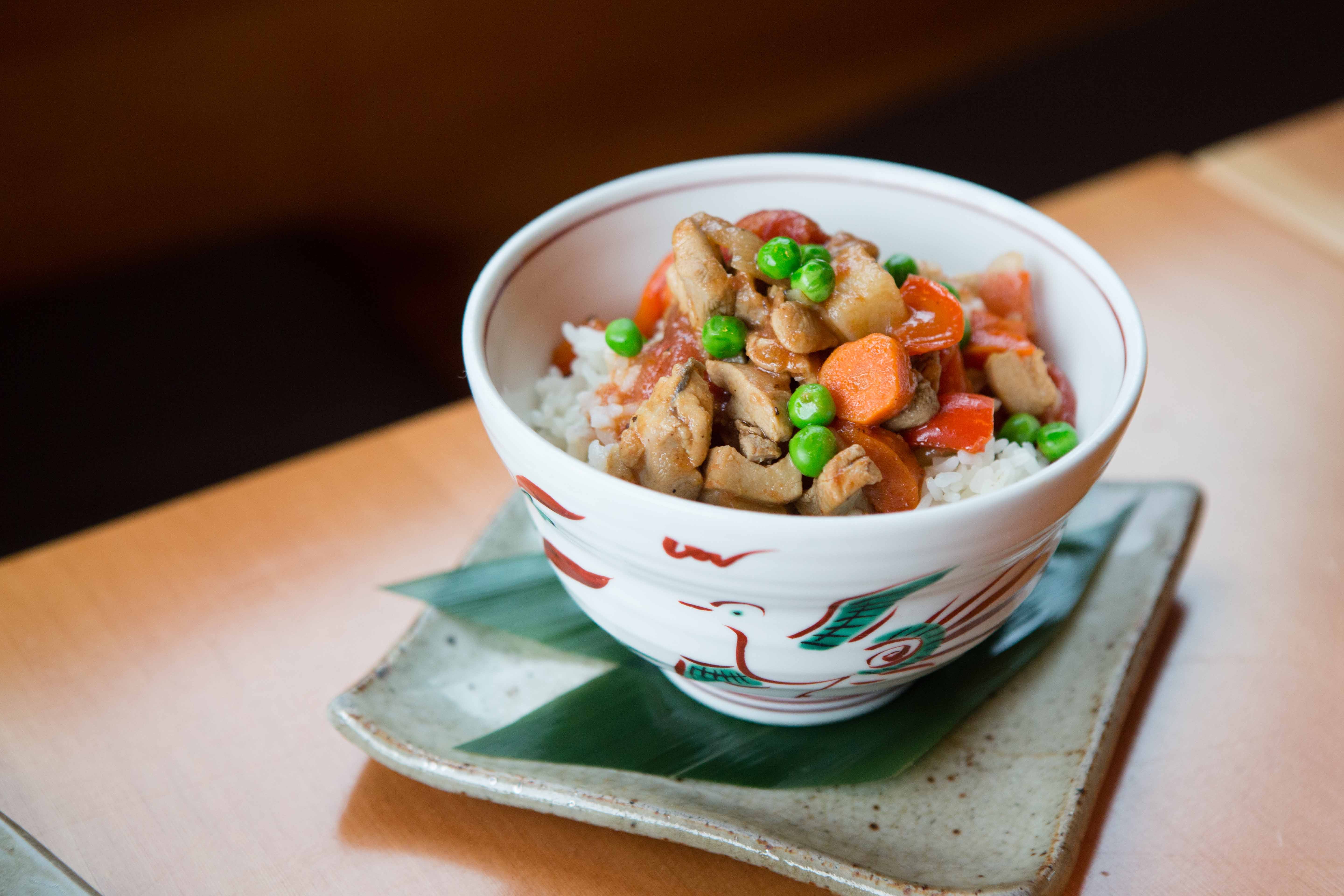TriathlEats Recipe: Chicken Afritada

Photo: Clare Barboza
Refuel with this hearty tomato-based chicken stew, a favorite in Filipino cuisine.
Ingredients
1½ pounds chicken, cut into strips or 1-inch cubes
1 large potato, cut into 1-inch cubes
1 large carrot, peeled and cut into 1-inch chunks
1 medium red bell pepper, cut into 1-inch squares
1 medium onion, chopped
¼ cup green peas (can use frozen peas)
4 cloves garlic, minced
Half can (8 oz) tomato sauce
1 T fish sauce
Salt, to taste
3 T vegetable oil
White or brown rice (cooked)
Directions
Heat vegetable oil in a pan over medium-high heat. Sauté potatoes, carrots and bell pepper for about 5 minutes (until knife tender). Once cooked, remove from pan, leaving the remaining juices and oil in the pan, and set aside. Using the same pan, turn heat down to medium and sauté garlic and onion for about 3 minutes—be careful not to burn the garlic. Add the chicken and turn heat to medium-high to sear. Turn heat down to medium-low heat and let simmer for 10–15 minutes or until tender, stirring occasionally. The chicken should be almost fully cooked. Add the fish sauce and cook for 2–3 minutes. Add 1¼ cups water and the tomato sauce and bring to a boil on medium-high heat, then let it simmer for 5 minutes on medium heat. Add back the cooked vegetables plus the peas, and simmer for another 5 minutes. Add salt to taste. Remove from heat, and serve over steamed white or brown rice. Makes 3–4 servings.
Chef Tips
To make this dish vegan, use tofu as the protein and replace the fish sauce with soy sauce.
To make it gluten-free, use gluten-free soy sauce.
If you don’t have rice, try serving over whole-wheat pasta or quinoa.
RELATED: 7-Day Meal Plan For Triathletes
Meet the Triathlete-chef
Trained in baking and pastries, Dexter Guiang is now 10 years into his career, which has included stints with the Denver Broncos and at Mammoth Seattle. He recently shifted culinary fields, starting as head line cook at Sushi Kappo Tamura in Seattle. Guiang is excited about the change because it means the opportunity to use local and seasonal ingredients, an important aspect of Japanese cuisine. “I feel better when I use fresh ingredients—it helps me train better as a triathlete,” he says. Becoming a sushi chef will take some time to master—sushi apprenticeships typically take 10 years, he says. The interest in fueling with seasonal, local ingredients has coincided with adopting a more active lifestyle—after spending several years leading the “chef life” of long hours, little to no exercise and unbalanced eating, Guiang signed up for a 5K. He lost weight, felt stronger and enjoyed running so much that he started racing marathons before injuries segued him into triathlon. Guiang just finished his first Ironman in Tempe, Ariz., in November and plans to complete a half-Ironman this summer while also finding “a balance of work and play,” he says. “I love continuing my development as a sushi chef, and I love nothing more than being active on my days off.”